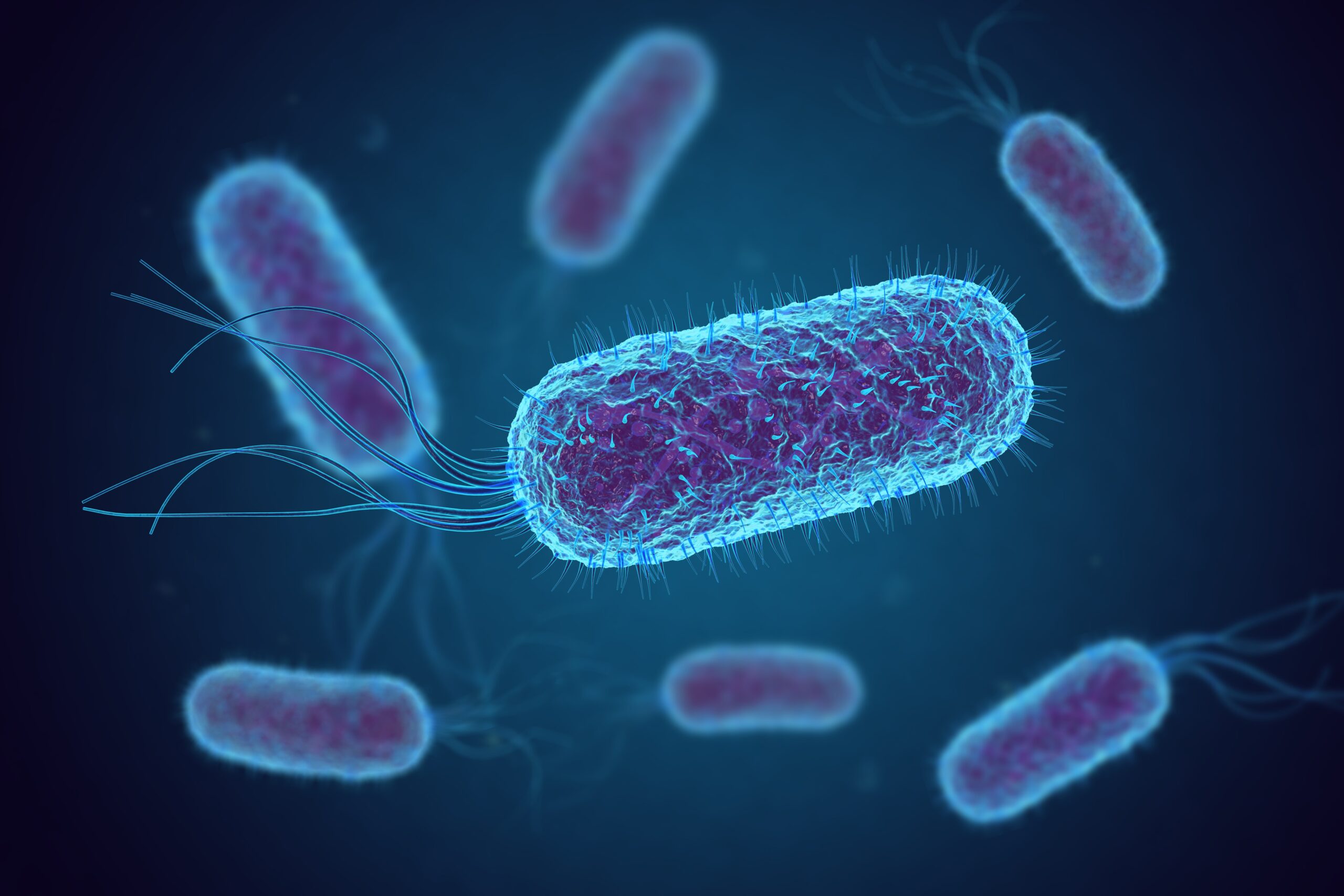Amyloids are perhaps best known as a key driver of Alzheimer’s disease.
The amorphous proteins, found throughout the human body, stick to nerve cells like plaque, choking off their function and contributing to a host of neurodegenerative diseases.
According to new University of Colorado Boulder research published this month in the journal Nature, these oft-maligned proteins also serve a critical role for bacteria in our environment, enabling them to fight off other “predatory bacteria.”
“We discovered that bacteria all around us are using amyloids as a molecular suit of armor,” said senior author Aaron Whiteley, assistant professor in the Department of Biochemistry.
By better understanding how bacteria defend themselves against threats, scientists could ultimately develop new tools to kill microbes growing out of control in places like hospitals and food processing facilities, he said. Such research can also offer new insight into how the human immune system works.
“A lot of the cellular machinery that makes up our own immune system actually originated in bacteria a billion-plus years ago,” said Whiteley. “If we can understand how bacteria are using those genes, we can better understand how humans use them too and possibly turn that knowledge into new therapies.”
E. Coli bacteria in green and their molecular suit of armor made of amyloid in purple. (Credit: Aaron Whiteley)
War between bugs
In recent years, the scientific community has grown increasingly interested in how bacteria fight off viruses, or phages. Such research led to the Nobel Prize -winning gene splicer, CRISPR.
Less attention has been paid to how bacteria fight off their own “predatory bacteria.”
For the new study, Whiteley and postdoctoral fellow Hannah Ledvina zeroed in on one particularly ruthless predatory bacterium called Bdellovibrio bacteriovorus. Beter known as “Bdello” (pronounced Dell-O), the microbial cannibal worms its way inside of other bacterial species, leaching out their nutrients until they starve to death— and then swims off to destroy again.
Bdello are everywhere from your shower to your neighborhood creek to your mouth.
“They are generally harmless to humans, but they are deadly to the bacteria that make us sick,” said Whiteley. “Even E. coli has to worry about catching one of these predatory bacteria.”
Conventional wisdom has held that Bdello are, essentially, invincible, with other bacteria fairly powerless to fight them off. (This has made Bdello a favorite candidate for emerging efforts to fight problem bacteria with bacteria.)
But Whiteley wondered: Do some bacteria put up a fight against such predatory bacteria and win?
And if so, how?
Armor made of amyloid
To find out, the research team started by amassing a vast collection of exotic E. coli strains from various sources around the globe, including the guts of a lizard, the urinary tract of a patient in Sweden and scat samples from leopards and kangaroos.
Then they set Bdello loose on these bacteria.
“We were blown away,” said Whiteley. “We found that about one-third of the strains were actually resistant to Bdello.”
In subsequent tests using a high-tech microscope, the team could see just how those resistant strains fought back.
The images showed clearly that the resistant strains completely coated themselves in a type of amyloid protein called curli, which is similar but not identical to the amyloids that cause Alzheimer’s disease.
In follow-up studies using genetic sequencing, the team found that bacteria used curli to fight back against other predatory bacteria, too.
“We contend that the same characteristics that make amyloids a problem for humans — the fact that they are durable and hard to break down—make them an ideal suit of armor for bacteria, which they use to defend against a wide range of threats,” said Whiteley.
Know thy enemy
The study also suggests that bacteria enlist amyloids to develop biofilms—the thin layers of resistant bacteria that persist on hospital instruments, medical implants, industrial machines and other surfaces, breeding infection and corroding parts.
Today, a common way to get rid of a biofilm is to scrape it off.
But Whiteley suspects that Bdello and other strains of predatory bacteria may have developed genetic tools or unique enzymes able to disintegrate that rigid shield and break down biofilm.
“Wherever organisms are fighting, there is biochemical innovation happening,” he said.
He and his colleagues are now working to determine what those shield-busting tools may be, in hopes that they bould be co-opted to develop new ways of fighting antibiotic resistance or amyloid-fueled diseases like Alzheimer’s.
As the bacteria in our environment duel it out, he’ll be watching.
“If we can understand what makes this armor so durable and what some predatory bacteria are doing to circumvent it, it could have all sorts of implications for human health,” he said.
